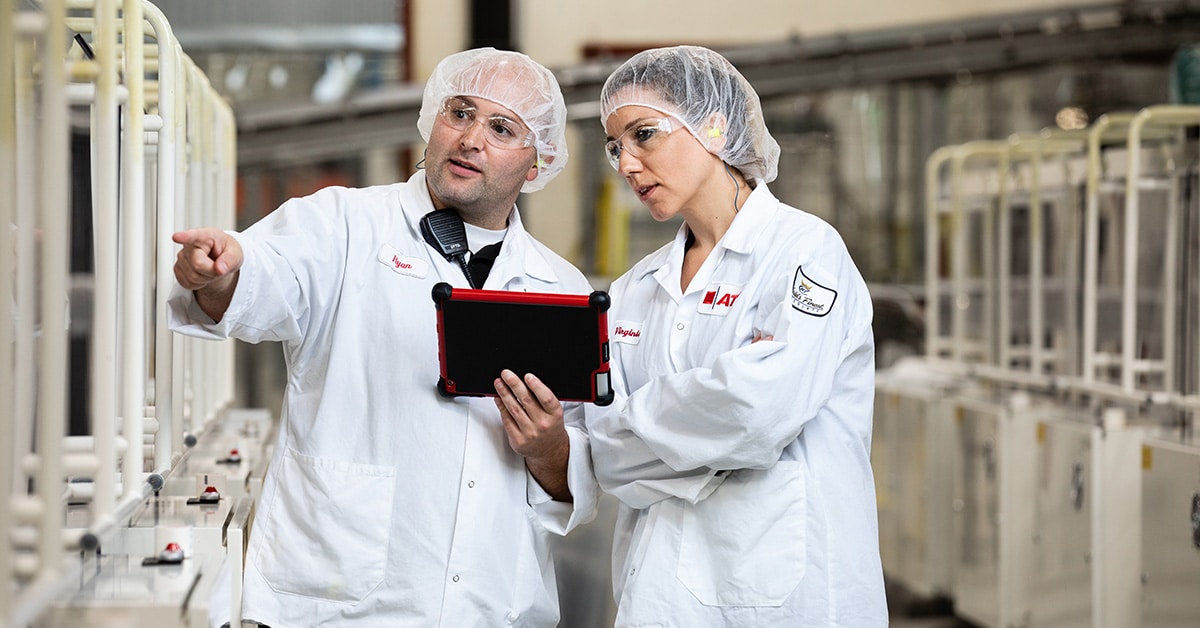Industrial maintenance is about more than fixing machines. It’s about building a culture of shared responsibility and operational excellence that helps improve efficiency, reduce downtime and keep staff motivated.
Maintenance leaders play a critical role in creating, sustaining and improving this culture on a large scale. In this piece, we’ll define core leadership duties, dig into key leadership traits, discuss common leadership challenges and detail effective leadership strategies.
Defining the maintenance leader’s role
The role of leadership in maintenance is evolving. Historically, maintenance leaders managed repair logs and ensured replacement parts were available. Today, these leaders take on key tasks such as strategic planning, team motivation, cost control and employee development. Core duties include:
- Creating preventative and predictive maintenance schedules: Leaders must develop both preventative and predictive schedules to ensure machinery is properly serviced. Preventative maintenance is regular and recurring. For example, maintenance leadership teams might schedule a packaging machine for quarterly inspections and bi-annual parts replacement — even if parts appear to be in working order. Predictive maintenance aims to identify and address problems proactively. This approach relies on data, requiring leaders to access both historical performance records and real-time information from Industrial Internet of Things (IIoT) enabled sensors. By analyzing this data, leaders can monitor machine performance and detect anomalies like sudden temperature spikes or pressure increases, which may signal the need for immediate repairs.
- Supervising technicians: Maintenance supervisors are also responsible for supervising technicians. This includes managing shifts and assigning tasks, along with reviewing maintenance work and following up with any concerns.
- Managing parts inventories: Mitigating downtime means having parts on hand for repairs. The caveat? Parts overstocking can lead to cluttered warehouses and significant storage expenses, while understocking can create costly delays. Leaders must find and maintain the balance between what’s needed and what’s available to maximize repair ROI.
- Collaboration with operations teams: Finally, a maintenance manager needs to collaborate with operations teams to minimize disruptions. This means providing lead time whenever possible about major repairs and keeping teams up to date about the status of unexpected maintenance tasks driven by predictive analytics.
Bridging the gap
Maintenance leaders are also responsible for bridging the gap between technical needs and executive goals. In other words, leaders need to balance C-suite expectations with the realities of machinery operations.
This starts with strategic alignment. While the primary goal in maintenance strategy is to keep machines running, it also impacts larger corporate objectives such as lean manufacturing initiatives or overall equipment effectiveness (OEE). For example, lean processes focus on reducing waste. This may require an adjustment to the available parts inventory to limit waste without compromising safety.
Credibility also plays a critical role. Technical skills and management experience are both required for credibility — the combination helps build trust that the head of maintenance knows what they’re doing and has the best interests of the maintenance team in mind.
Key leadership traits for maintenance managers
Effective leadership in industrial maintenance management requires in-depth operational knowledge. In isolation, however, this isn’t enough — leaders also need the right combination of personality traits to motivate staff and build a maintenance culture of trust.
From an operations perspective, leaders need traits such as:
- Technical proficiency and continuous learning: Skills aren’t static. Great leaders stay updated on new trends such as IoT-enabled monitoring, the use of AI for predictive maintenance and automated workflow management.
- Accountability and results orientation: Industrial facility management and maintenance success starts with key performance indicators (KPIs) such as mean time between failures and cost per repair that identify desired results. Accountability is the other half of the equation; leaders must encourage individual accountability for results and take overall accountability for the team.
When it comes to interpersonal efforts, key traits include:
- Communication and conflict resolution: Interpersonal and inter-departmental conflicts are common. Great leaders can effectively resolve technician concerns and smooth over friction tied to scheduled downtime that impacts operations.
- Empathy and team building: People remain the core of effective maintenance teams. By mentoring junior technicians and recognizing team and individual achievements, leaders can foster a supportive environment.
Common challenges for maintenance leadership
Maintenance supervisors also face operational challenges such as:
- Resource constraints: Budget issues may constrain parts, training or equipment spending. Here, performance data is critical to justify budget requests.
- Aging workforces and skills gaps: With more open jobs than qualified candidates and with many skilled staff retiring, leaders are understandably worried about industrial maintenance staffing challenges. Apprenticeships and cross-training programs can help reduce the impact.
- Firefighting culture: Reactive maintenance remains common for many companies, but waiting until there’s smoke means something is already on fire. Leaders can alter this approach with proactive maintenance schedules, advanced monitoring and real-time communication.
- Data silos and tech resistance: Implement new solutions gradually, such as CMMS and sensors, while showcasing success stories to secure executive support.
Strategies for effective maintenance leadership
A good maintenance manager defines clear goals. Great leaders create a culture of excellence that motivates staff to meet and exceed these goals.
Here are five strategies to help industrial maintenance managers make the move from good to great.
- Create a shared vision and clear goals: Communicate key metrics such as downtime reductions, safety targets and OEEs so all maintenance technicians share the same collective goals.
- Hold regular team huddles and provide feedback: Schedule short daily or weekly sessions to address issues, share updates and celebrate wins.
- Encourage cross-department collaboration: Work alongside production, operations, engineering and finance to schedule downtime or secure needed budgets.
- Offer mentoring and skills growth: Provide technician training opportunities, such as PLC programming or advanced diagnostics, along with individual development plans.
- Prioritize continuous improvement: Apply solutions such as lean thinking and root cause analysis (RCA) to repeated maintenance issues and encourage staff to provide ideas.
Leveraging technology and predictive maintenance
Tools such as IIoT sensors, computerized maintenance management systems (CMMS), and advanced maintenance services help enable predictive maintenance with support for:
- Machine health monitoring: This approach uses sensor data to detect anomalies before failures and schedule planned downtime.
- Workflow automation: Automation provides real-time updates on work orders, available inventory and technician assignments to reduce confusion.
- KPI tracking: Tracking industrial maintenance KPIs such as mean time between failures (MTBF), mean time to failure (MTTF) and cost per machine hour helps establish a baseline. Sharing these KPIs with production and operations helps improve synergy.
Leading the way
To create a culture of excellence, maintenance leaders must answer three questions: What, why and how?
- “What” defines key tasks — the processes necessary to keep machinery up and running and limit the risks of downtime.
- “Why” speaks to the impact of unexpected issues while emphasizing the importance of communication and connection needed for teams to find a common purpose in the maintenance process.
- “How” provides the path to improved operations. This may include the use of IIoT sensors, workflow automation tools, data-driven decision-making and proactive maintenance services.
Ready to lead the way? Learn how ATS’s solutions empower maintenance leaders to optimize equipment uptime and foster a high-performance maintenance culture. Let’s talk.






